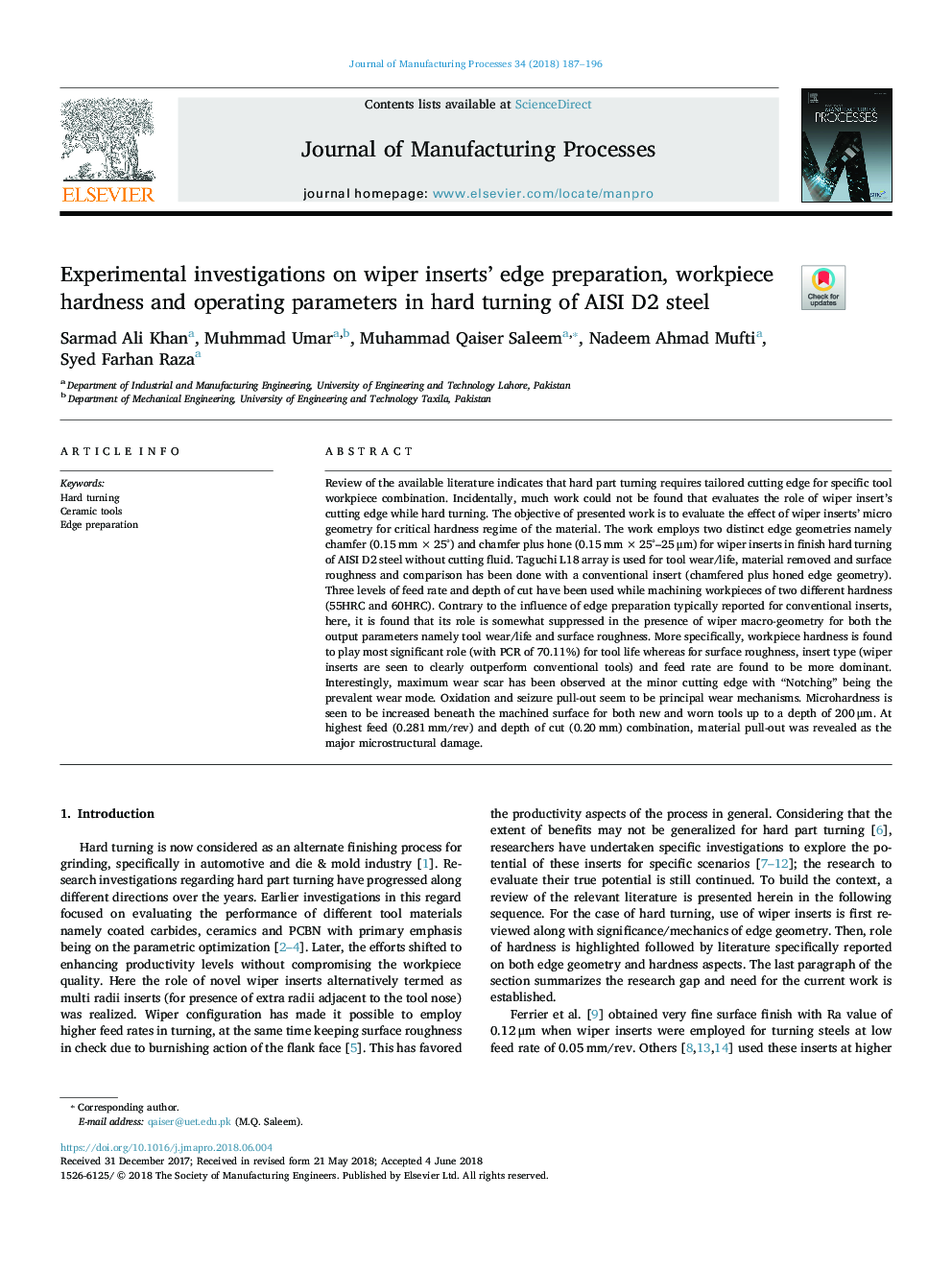| Article ID | Journal | Published Year | Pages | File Type |
|---|---|---|---|---|
| 8047855 | Journal of Manufacturing Processes | 2018 | 10 Pages |
Abstract
Review of the available literature indicates that hard part turning requires tailored cutting edge for specific tool workpiece combination. Incidentally, much work could not be found that evaluates the role of wiper insert's cutting edge while hard turning. The objective of presented work is to evaluate the effect of wiper inserts' micro geometry for critical hardness regime of the material. The work employs two distinct edge geometries namely chamfer (0.15â¯mmâ¯Ãâ¯25°) and chamfer plus hone (0.15â¯mmâ¯Ãâ¯25°-25â¯Î¼m) for wiper inserts in finish hard turning of AISI D2 steel without cutting fluid. Taguchi L18 array is used for tool wear/life, material removed and surface roughness and comparison has been done with a conventional insert (chamfered plus honed edge geometry). Three levels of feed rate and depth of cut have been used while machining workpieces of two different hardness (55HRC and 60HRC). Contrary to the influence of edge preparation typically reported for conventional inserts, here, it is found that its role is somewhat suppressed in the presence of wiper macro-geometry for both the output parameters namely tool wear/life and surface roughness. More specifically, workpiece hardness is found to play most significant role (with PCR of 70.11%) for tool life whereas for surface roughness, insert type (wiper inserts are seen to clearly outperform conventional tools) and feed rate are found to be more dominant. Interestingly, maximum wear scar has been observed at the minor cutting edge with “Notching” being the prevalent wear mode. Oxidation and seizure pull-out seem to be principal wear mechanisms. Microhardness is seen to be increased beneath the machined surface for both new and worn tools up to a depth of 200â¯Î¼m. At highest feed (0.281â¯mm/rev) and depth of cut (0.20â¯mm) combination, material pull-out was revealed as the major microstructural damage.
Related Topics
Physical Sciences and Engineering
Engineering
Industrial and Manufacturing Engineering
Authors
Sarmad Ali Khan, Muhammad Umar, Muhammad Qaiser Saleem, Nadeem Ahmad Mufti, Syed Farhan Raza,
